Our favourite places to stay on this sleepy Cebu island.
Fully Vaxxed Filipino Tourists Can Now Visit Spain: Here’s Everything They’ll Love About It

If you grew up enthralled by Philippine history, then Spain is most likely one of the countries that held your fascination. Even up to this present day, most influences from Spanish culture remain alive and well; from our national language and cuisine to our traditions and current norms. Granted, Spanish folks travelling here would easily see these similarities. But what if it’s the other way around — i.e., for Filipinos planning to visit ?
At this point, you probably have more than enough reasons as to why you’d love to go to Spain in the future. After all, what’s not to love about this splendid destination? You can even take it up a notch by tracing our Filipino roots there. This includes observing aspects of Spanish culture that are similar to our own, as well as exploring spots that most likely inspired several Philippine attractions.
Know before you go: Spain travel requirements for Filipinos
Spain has officially reopened to fully vaccinated travellers, Philippine passport holders included. Besides your valid passport and Schengen visa, there are just a few more requirements you’ll have to take care of before travelling.
Here’s what you’ll have to prepare for a smooth travel experience amid the COVID-19 pandemic, according Spain’s TravelSafe website:
Travellers will have to fill up a health control form before travelling. You can find the form through the official website or via the Spain Travel Health app available for Android and iOS devices.
Once you’ve completed the health control form, you will receive a QR code. Make sure to save the code, which you’ll have to present via your smartphone or any electronic device upon boarding your flight and arriving in Spain.
Secure a vaccination certificate issued by the country’s competent authorities. In the Philippines, that would be a digital vaccination certificate from VaxCertPH or a Bureau of Quarantine Yellow Card. The certificate must be issued at least 14 days after you’ve received the last dose of your COVID-19 vaccine.*
Spain acknowledges the following vaccines: Pfizer-Biontech, Moderna, AstraZeneca, Janssen/Johnson & Johnson, Sinovac, and Sinopharm.
Upon arriving in Spain, visitors will have to undergo a health security check. This will include at least the following protocols: temperature checking, review of documents, and a visual assessment of each passenger’s health status.
*Only children under 12 years old are not required to present a vaccination certificate.
For the most updated information on Spain’s travel restrictions and requirements, please visit their TravelSafe website.
Places in Spain that Filipinos can relate to
1. Old villages and medieval towns
If you enjoy exploring historic Vigan and far-off Batanes, then you’ll definitely love the charming villages in Spain that look like these Philippine attractions. You can find most of these postcard-worthy destinations in the rural areas, away from the buzz and crowds of the city. From quaint yet picturesque streets to breathtaking landscapes and centuries-old architecture, you just might find yourself wishing to stay longer than intended.
Almagro, Castille-La Mancha
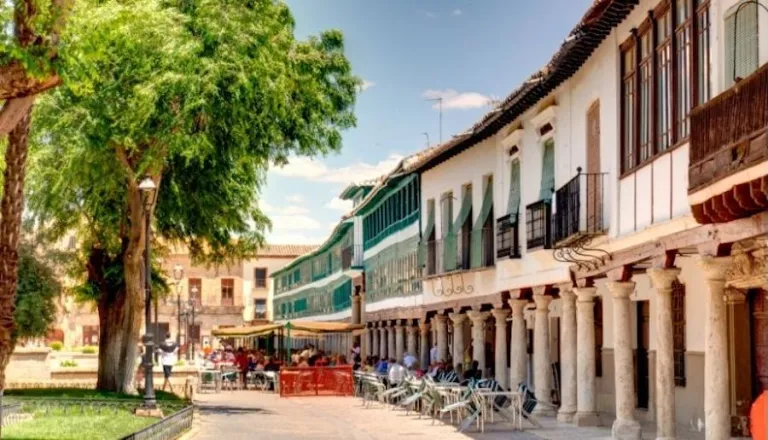
For such that feel more familiar to Filipino travellers, our first pick would definitely be Almagro. Once you’re there, make a beeline for its Plaza Mayor, which features arcaded and colonnaded buildings with colourful green-trimmed windows. It’s arguably the loveliest town square in Spain! A few steps away is the Corral de Comedias, an open-air theatre that still puts on classic Golden Age plays — i.e., those from the 16th and 17th centuries.
Chinchón, Region of Madrid
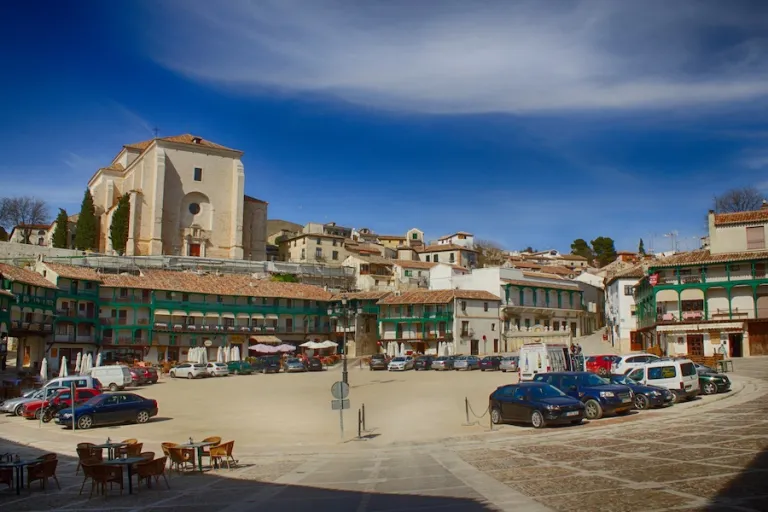 Image credit: M. Peinado
Image credit: M. Peinado
Despite being only a 45-minute drive from downtown Madrid, the town of Chinchón remains quite the under-the-radar destination. It’s your best bet if you like a rustic scenery set in a quiet setting, as if you’re all the way in the countryside. Its Plaza Mayor features a uniquely impressive layout; it doubles as a bullring! While you’re at it, step inside some of the traditional shops selling artisanal goods. After that, head up to the Clock Tower and the Old Castle for a stunning panoramic view of the hillside homes.
Bagergue, Catalonia
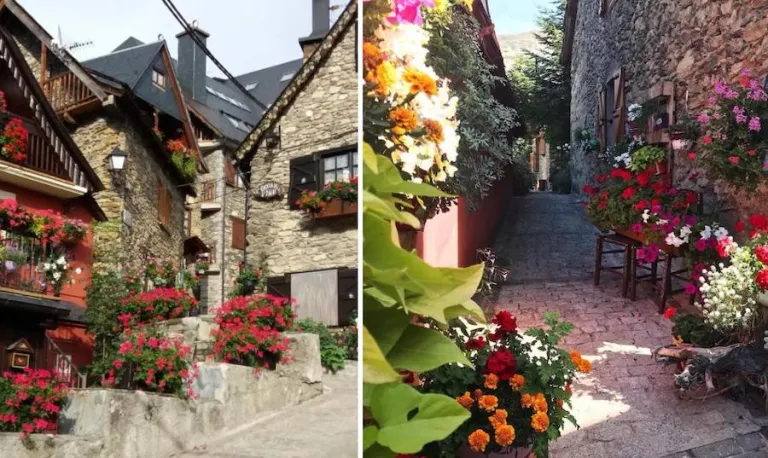 Image credit: Baguerge Facebook Page
Image credit: Baguerge Facebook Page
If you’re more into chilly highlands dotted with lush rolling hills, then head over to Bagergue in the Valle de Aran, which is on the Spanish side of the Pyrenees mountain range. There, you’ll find lovely stone houses with slate roofs and wooden balconies that are often adorned with vibrant blooms. One of its most iconic attractions is the Església de Sant Fèlix, which dates all the way back to the 12th century! Another must-see would be Hormatges Tarrau, known to be the highest-altitude cheese factory in the Pyrenees.
2. Catholic churches
It’s no secret that Spain has a strong Catholic background — this religion is, after all, their main influence in the Philippines. And if you’d like to explore these roots further, or simply marvel at the history and architecture, then you’ve come to the right country! Fair warning: each church is majestic and elaborately designed in its own way, so chances are, it’s hard to pick just one.
Seville Cathedral
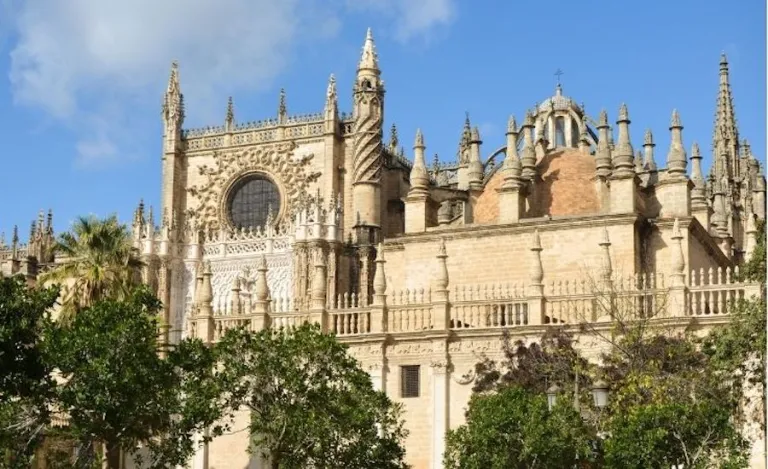
First up among this category of is the Seville Cathedral: the world’s largest Gothic cathedral. Built between 1434 and 1517, it stands over what used to be Seville’s main mosque. In fact, its bell tower, called the Giralda, incorporates the minaret of the former mosque. Legend has it that the architects made it their goal to build a church so large that ‘future generations will think they were mad.’ Another fun fact? This is also where you’ll find the tomb of Christopher Columbus.
Burgos Cathedral
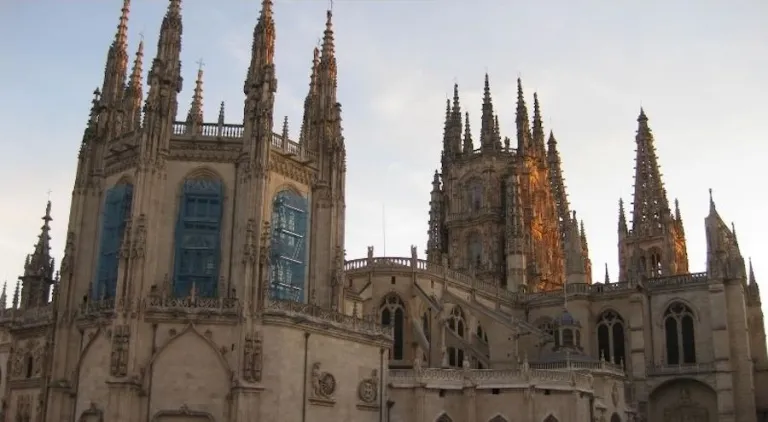
The Cathedral of Saint Mary of Burgos, or simply the Burgos Cathedral, is a UNESCO World Heritage site and another fine example of Gothic architecture. Initial construction took place between 1221 and 1293, on the orders of King Ferdinand III of Castille. A few centuries later, Renaissance additions were made. What’s especially remarkable about it is the Puerta del Sarmental, its portal that also happens to be a sculptural masterpiece.
Toledo Cathedral
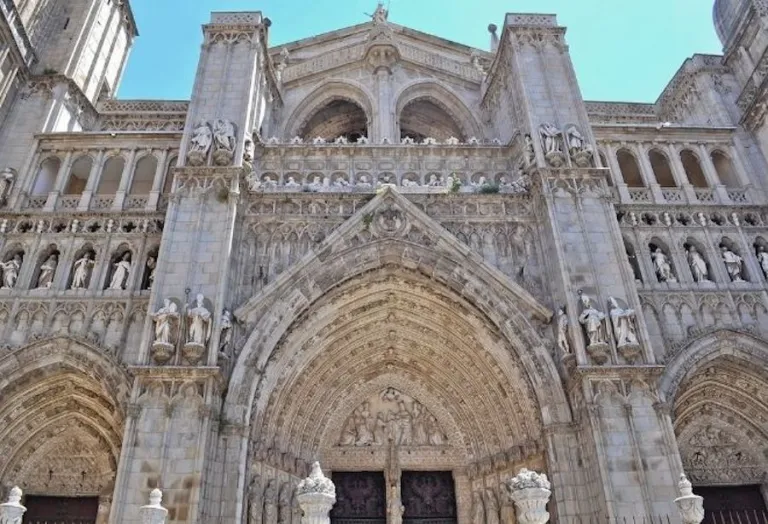
Upon stepping inside the Toledo Cathedral, many a Filipino traveller would probably think that the interiors look quite like the one in Manila Cathedral. And just like the one in Seville, this place in Spain was also built on top of a former mosque. While its origins date back to the sixth century, it only became a Catholic church in the nineteenth century. Oh, and its complete name is actually the Santa Iglesia Catedral Primada de Toledo (quite a mouthful, we know). Make sure to visit its Cathedral Treasury, where you’ll find a jaw-dropping collection of gold, silver, and precious stones.
Sagrada Familia
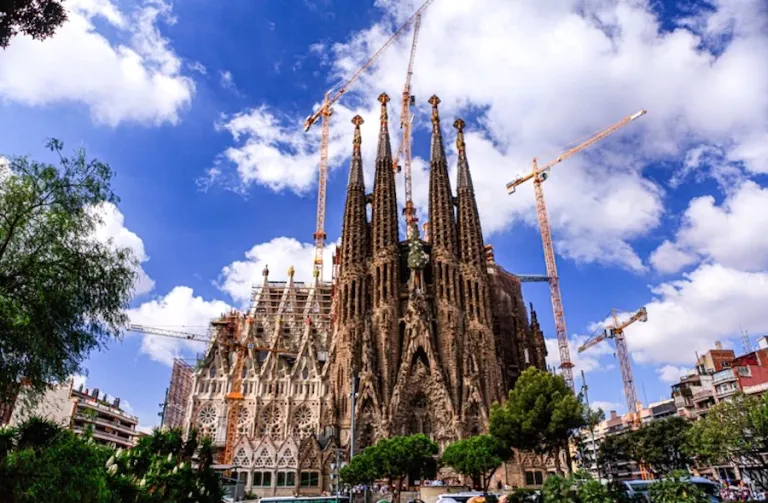 Image credit: Sung Shin
Image credit: Sung Shin
Of course, you can’t talk about must-see religious without mentioning the iconic Sagrada Família. This UNESCO World Heritage site is one of the most famous works by Modernist architect Antoni Gaudí. As for the history, it actually took years before it began construction in 1882 — and, as you might have already known, it’s still being finished up to this day.
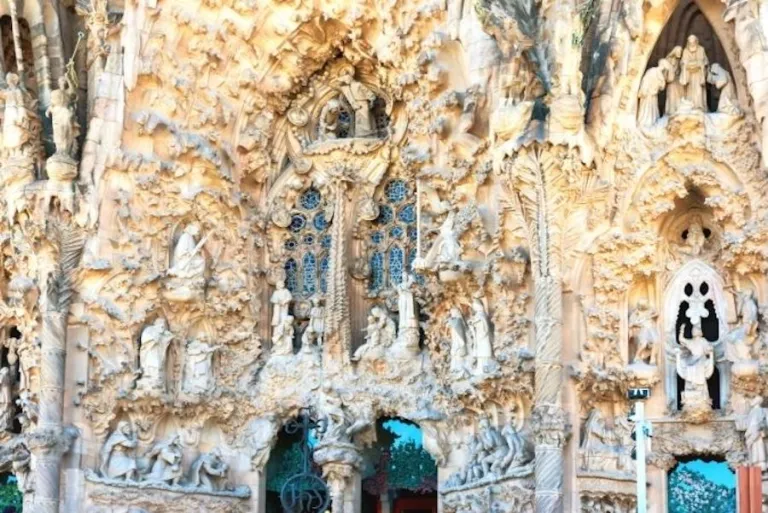
Some predict completion to be in 2026 (the centennial anniversary of Gaudí’s death), while others believe it might continue till the 2040s. Nonetheless, this doesn’t stop travellers from all over the world from visiting this part-Gothic, part-Art Nouveau magnum opus in Barcelona.
3. Mosques and Moorish architecture
Similar to the Philippines, Spain also has a centuries-old presence of Islamic religion and culture. After all, the Muslim Moors ruled the Iberian Peninsula for most of the medieval period, leaving this southern part of the country with spectacular mosques and palaces. While some of these have been demolished or repurposed, there are still those that fortunately remain. Take a look at these works of Moorish architecture that will take you back to the era of A Thousand And One Nights.
Mosque-Cathedral of Córdoba
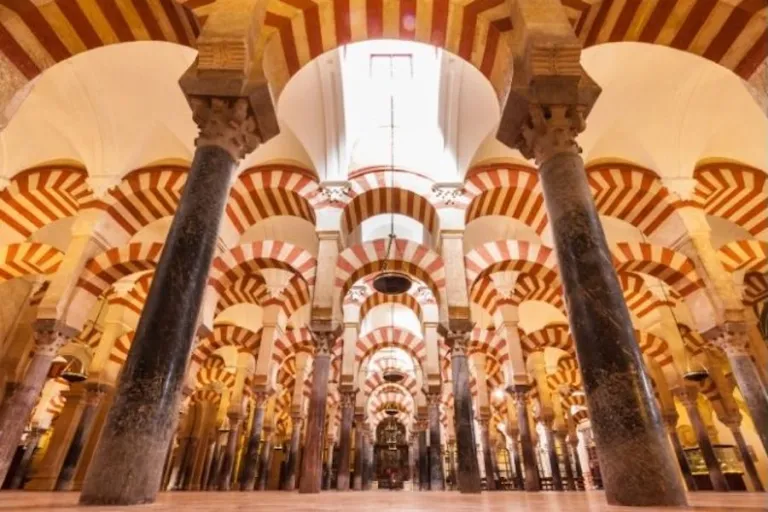
This religious-historic wonder is one of the most visited — and with good reason. It was believed to have initially been a Catholic church, then turned into a grand mosque during the Islamic Period, wherein most of its impressive features were built. That said, the Mosque-Cathedral of Córdoba is one of the oldest structures still standing from this period.
Its highlights include the exquisitely designed Hypostyle Hall and Mihrab. There’s also the Orange Trees Courtyard outside the complex where admission is free. And even though it has long been reverted to a cathedral, the Mosque-Cathedral of Córdoba remains to be one of the best examples of Moorish architecture.
The Alhambra
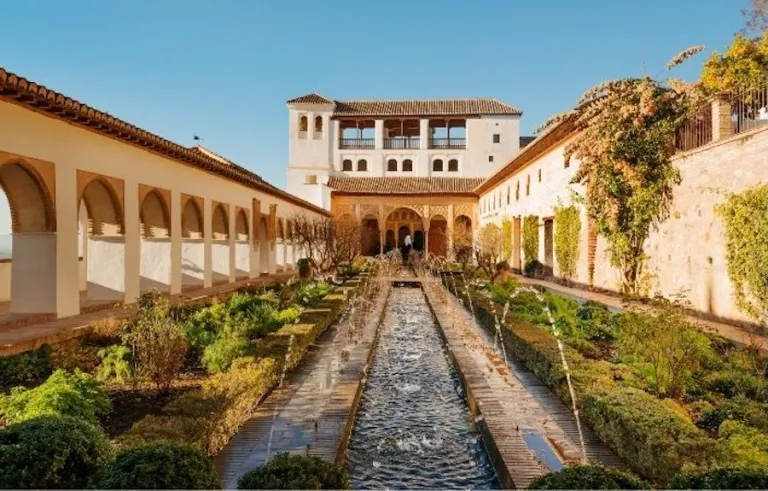
On the outskirts of Granada lies the majestic Alhambra: an ancient palace and fortress complex that used to be the rural residence of the emirs. In fact, its name is an abbreviation of Qal’at al-Hamra, which means ‘red fort’ in Arabic. It was built in 1238 by the Nasrid Dynasty, the last Muslims to rule in Spain. Oh, and it’s also the only palatine city still preserved from the Islamic Period.
From lovely rectangular courtyards to countless fountains, the Alhambra represents the best architecture and intricate decor from the bygone era. Given that it features all known artistic techniques of the Hispano-Muslim world, it holds the status of a UNESCO World Heritage site.
Mosque of Cristo de la Luz
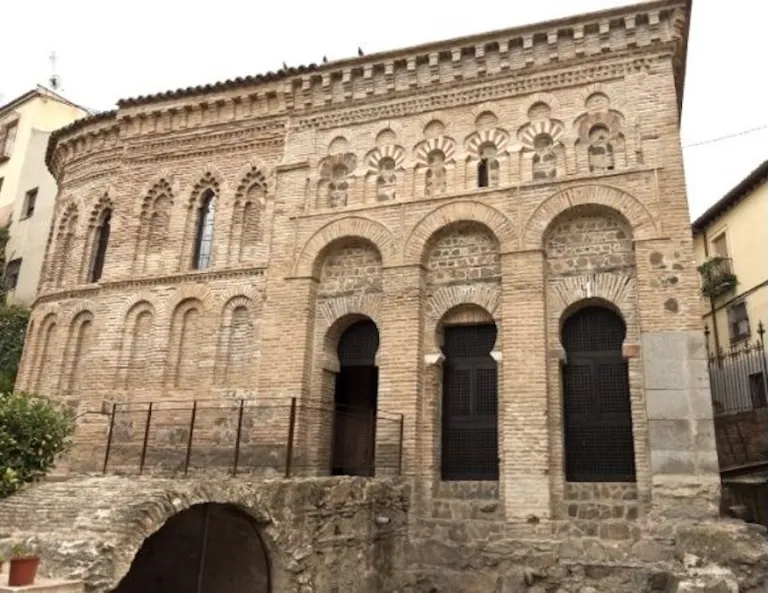
The Mosque of Cristo de la Luz is one of the few mosques in Spain that remains in its exact original state. You can find this small structure in Toledo — specifically, in an area of the city that used to be the Medina. It features a square plan of nine metres per side and is divided into nine parts, each one containing a cupola with a distinctive design. Other notable things about this are the fragment of Roman road in the garden, as well as the small cave right underneath the former mosque!
Tip: Stay curious about Spain’s cultural and religious history. Read more about them here!
4. Beaches and islands
Spain too is known for its dazzling white-sand beaches. From lively shores to quiet island coves, there’s definitely a lot to choose from. Though, we’ve narrowed down such to those that would most appeal to Filipino beach bums. Don’t forget to pack lots of sunscreen!
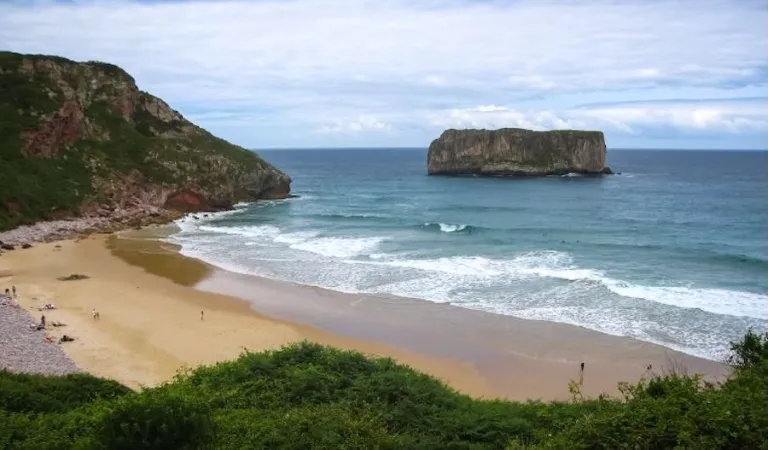
To start off, we have Playa de Andrin up north in Asturias. This stunning white sand beach surrounded by rock formations is your best bet for surfing, which explains why it’s a crowd favourite among Europeans. Though, if you prefer calmer shores perfect for swimming and even kayaking, we recommend Playa de Pechon in Cantabria. It even connects to a charming islet that you can access by an isthmus.
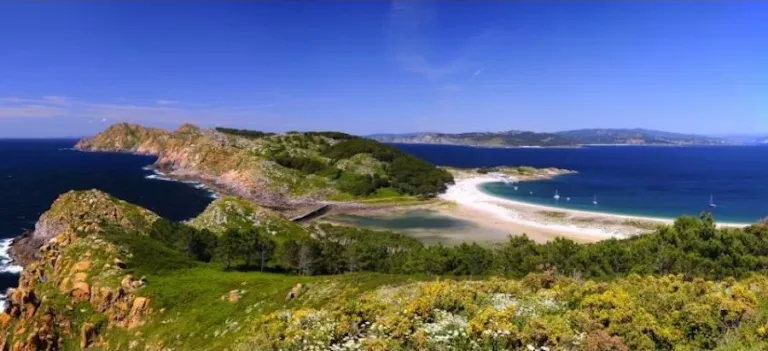
For snorkelling and otherworldly landscapes, head over to Playa de Monsul. You’ll find this in the Cabo de Gata Natural Park in Almeria. And if this beach looks familiar, that’s because you’ve probably seen it on Steven Spielberg’s Indiana Jones and the Last Crusade! Prefer something less touristy? The Las Cies Islands are the closest you can get to a secluded ‘tropical’ paradise in Spain. Once there, make a beeline for Playa de Rodas: a crescent-shaped white sand strip extending for nearly a mile and sits between two islands.
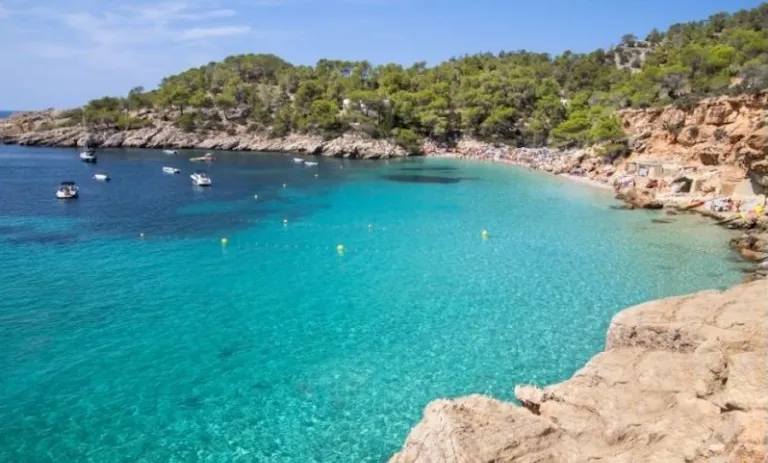
And finally, there’s Playa Cala Salada in the ever-lively island of Ibiza. (Naturally, we can’t leave out this exciting island destination!) After exploring old towns and other attractions, escape to this cove for some much-needed peace and calm — and maybe some seafood paella from the beach café as your recovery meal, too. Though, if you still have lots of energy left, you can also go cliff-jumping or even check out some Bronze Age cave paintings in nearby Ses Fontanelles.
5. The Jose Rizal Monument
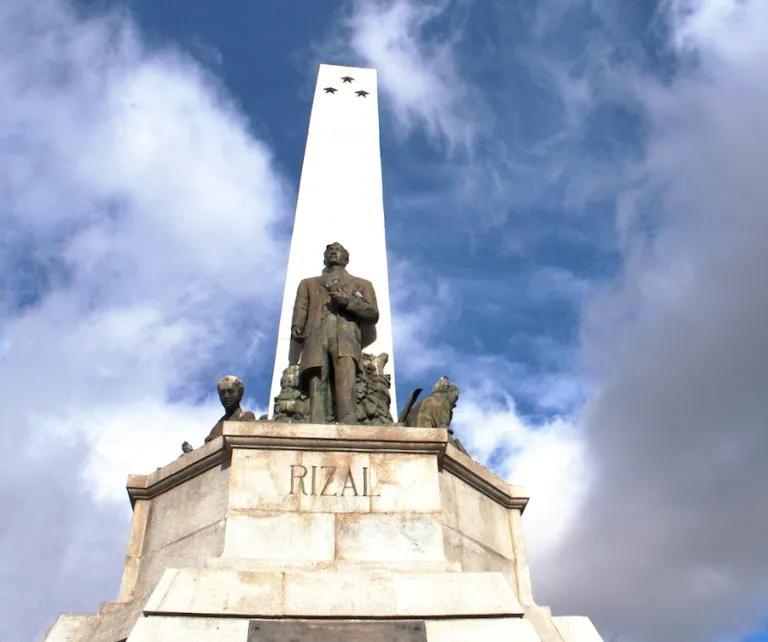 Image credit: Embassy of the Philippines, Madrid Official Website
Image credit: Embassy of the Philippines, Madrid Official Website
If you still remember enough from Philippine history classes, you’d know that Jose Rizal spent two years studying in Madrid. But did you know that the Spanish capital also has a Jose Rizal Monument that’s a replica of the one in Luneta Park? You can find this along Avenida de Filipinas. So, yes, among all the that we’ve listed down, this is definitely the most Filipino one. Upon closer look at the monument, you’ll see a plaque containing Rizal’s very last poem, Mi Ultimo Adios, which is written in Spanish.
During certain occasions, such as Rizal’s birthday and his death anniversary, Filipinos in Madrid gather here to commemorate the legacy of our national hero. And while you’re at it, might as well do the walking tour curated by the Philippine Embassy in Madrid. It includes a map and itinerary featuring not only the Jose Rizal Monument, but also the places that Rizal resided, studied, and frequented throughout his stay.
Things from Spanish culture that are reminiscent of our own
6. Language
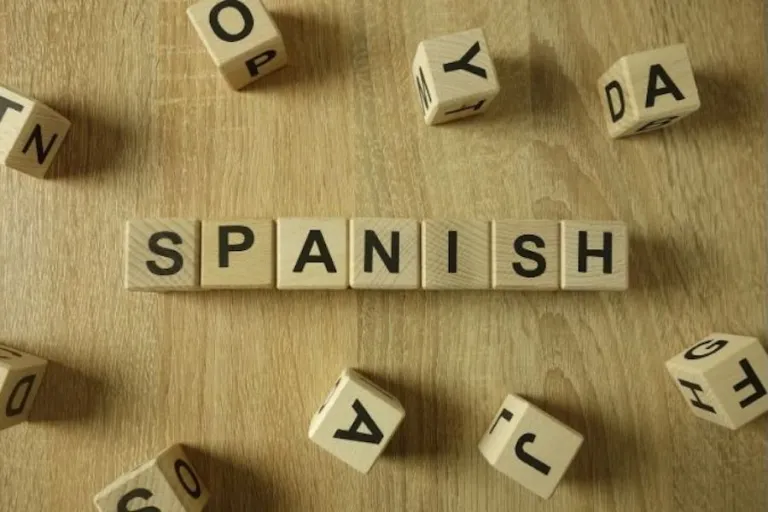
It’s common knowledge that there’s quite a lot of Filipino words that are derived from the Spanish language. I remember a close friend of mine who went to Spain during a college semester abroad, and she mentioned a notable exchange she had with several locals. Upon learning that she’s Filipino, some of them would say, “Oh, we kinda have the same words, right?” From there, they would ask to cite some Filipino words for comparison. Suffice to say, there were quite a lot of similarities!
For starters, how we name most days of the week: Lunes, Martes, Miyerkules (Spanish: Miércoles), Huwebes (Jueves), and so on. Another would be the way we tell the time — e.g., ala una (la una en punto) and alas dos y media (las dos y media). Even other terms we use in day-to-day conversations are also originally Spanish, such as: trabaho (trabajo), kuwento (cuento), intindi (entiende), and asikaso (hacer caso).

And finally, there’s the Chavacano regional language that’s commonly spoken in certain parts of the Philippines like Zamboanga and Cavite! Those who grew up speaking this tend to describe it as ‘broken Spanish.’ Though, to be more precise, Chavacano uses mostly Spanish words in a more Filipino grammatical structure. Oh, and a fun fact: it’s the only Spanish-based creole language in Asia!
7. Food
 L-R: Lechon from the Philippines; cochinillo asado from Spain
L-R: Lechon from the Philippines; cochinillo asado from Spain
Let’s be real — we can’t talk about travel without talking about food as well. After all, to indulge in a country’s cuisine is also to learn more about their culture and history. That said, it’s no surprise that many Filipinos are fascinated by this aspect of Spanish culture, if only to observe how it influenced our own.
 L-R: Longganisa with garlic rice and egg from the Philippines; longaniza from Spain
L-R: Longganisa with garlic rice and egg from the Philippines; longaniza from Spain
Let’s start with Filipinos’ staple dish for every special occasion: lechon. The original version from Spain is called cochinillo asado; though, unlike the Filipino version that uses regular-sized pig, this one is a roasted suckling pig. Another meaty Filipino delicacy is longganisa, whose Spanish counterpart is called longaniza. It also comes in several varieties from different regions, just like how it is here!
 L-R: Leche flan from the Philippines; flan de leche from Spain | Image credit (left): Jeanne Tiong
L-R: Leche flan from the Philippines; flan de leche from Spain | Image credit (left): Jeanne Tiong
On the desserts side, Spain has flan de leche (milk flan) that is very reminiscent of Filipino leche flan. However, the latter is the somewhat heavier version that’s made with condensed milk and way more egg yolks. For merienda, empanada takes centre stage. Aside from Spain, it’s also commonly found in former colonies, including the Philippines. This one gets its name from the Spanish verb empanar, which means ‘wrapped or coated in bread.’
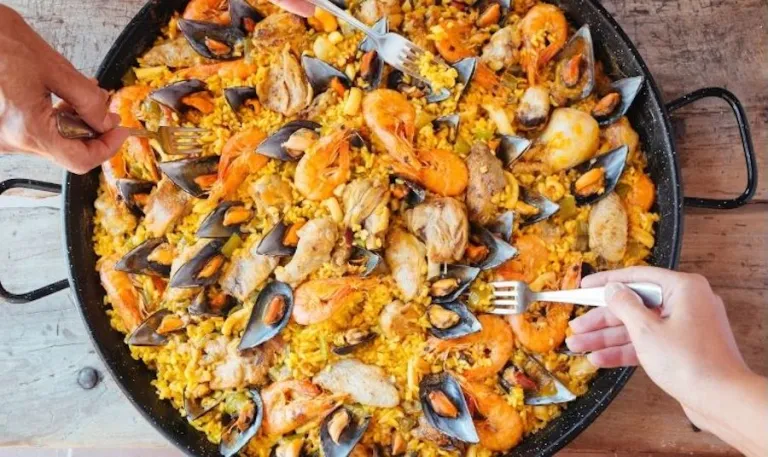
Wait, what about rice dishes, you ask? After all, it’s a universally acknowledged fact that Filipinos cannot live without rice. If this is something you can relate to, well then, make sure to try out authentic paella on your next trip to Spain! Many would say that you can find the best ones from the Valencia region. Although, the origins of paella actually go further back to Northwest Africa, and it was brought to Spain by the Moors.
Tip: Want to go on a Spanish gastronomical adventure? Check out Spain’s food tours here!
8. Religious festivals
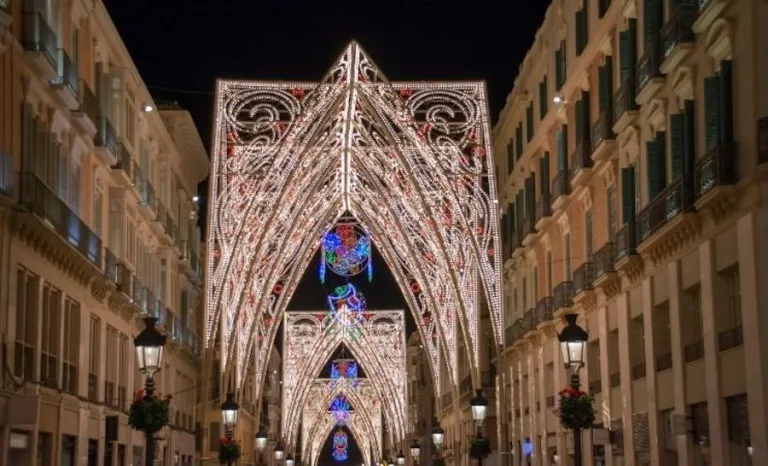
As if the term wasn’t already enough of a clue, Filipino fiestas are centuries-old traditions that we got from the Spanish. Most of these are hinged on religious practices from the Catholic Church. And among all these religious festivals, the most prominent one would definitely be the feast of Christmas. In the Philippines, the celebration starts every 16 December, on the first day of Misa de Gallo, more commonly known as Simbang Gabi.
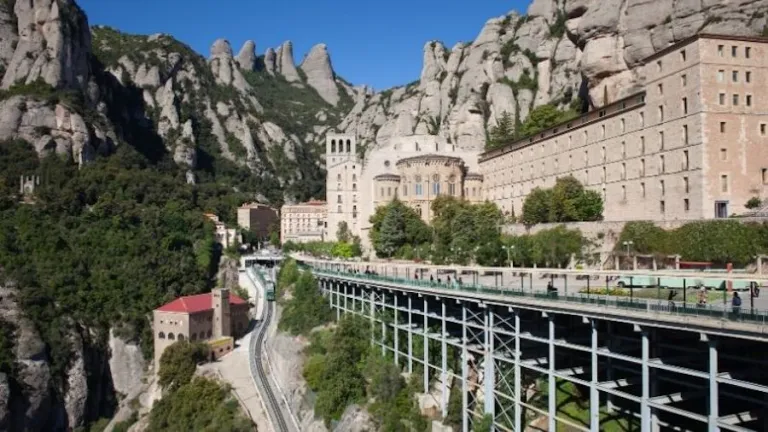
In Spanish, this term translates to ‘Rooster’s Mass,’ and just like in the Philippines it culminates on Christmas Eve, a few hours before midnight. That said, one of the must-visit during this wonderful time of the year is the Santa Maria de Montserrat. You’ll find this Benedictine monastery in the Montserrat mountain range of the Catalonia region. There, the highlight of Misa de Gallo would be the Escolania de Montserrat, the oldest boys’ choir in Europe.

On that note, Noche Buena is another lovely Christmas tradition that we got from Spain. Similar to how it is here, the centrepiece of this midnight feast in Spain is the previously mentioned lechon. But before that main course, they often start with a tapas course of appetiser and cheese, followed by piping hot fish chowder.
For dessert, the popular pick is the Spanish version of turrón: a decadent nougat confection made of honey, sugar, egg white, and toasted almonds. (Yep, different from the turon that Filipinos have for merienda.)
9. Friendly culture

If you ask any Filipino who travelled to Spain about their interactions with locals, they’d most likely say that they’re definitely the friendly bunch. “For some reason, they get excited when you say that you’re Filipino. Like, they really try to connect with you,” a friend told me.
Just like us, Spanish folks are not only warm and welcoming but also quite talkative and sociable. So, if you ever wondered where we got our hospitable qualities and fondness for social gatherings — well, there you have it.
10. Siesta

With so much socialising happening day in and day out, it only makes sense that one has to recharge their ‘extrovert batteries,’ right? For that, there’s siesta — A.K.A. that glorious afternoon nap that’s very much a thing for both Filipino and Spanish cultures.
The Spanish usually take siesta for about 30 minutes up to an hour after having lunch; either to rest, nap away the mid-afternoon heat, or both. Though realistically speaking, most locals only get to do this on weekends, since weekday afternoons are for work or school. That said, it’s definitely a good idea to have your siesta before heading out to a fiesta (party) come sundown.
Here’s to experiencing the best that Spain has to offer while also rediscovering our heritage. When it comes down to it, this isn’t something Filipinos can do in other destinations! That said, ready to make the most out of your future trip to España?
For more information about Spain, visit Spain Tourism’s official website.
Brought to you by the Spain Tourism Board.
Published at
About Author
Marcy Miniano
Subscribe our Newsletter
Get our weekly tips and travel news!
Recommended Articles
10 Bantayan Island Resorts, Hotels, and Rentals for Your Tropical Escape 10 Best Mountain Cafes in the Philippines for Your Peak Coffee Experience Coffee date on the mountains, anyone?
10 Commandments for Responsible Travel Flexing Spread the good word!
10 Fairytale Castles In Europe Filipinos Need To See! Permission to feel like royalty even for a day?!
10 Family Outing Ideas in Metro Manila Under ₱500 Looking for a weekend bonding with the family under ₱500? Head to these places, pronto!
Latest Articles
Mother’s Wonderland: Quezon Province’s Fantasy Theme Park Explore a magical theme park in Tayabas filled with nature, art, and fantasy
Kayangan Lake in Coron, Palawan: Everything You Need to Know Dive into the crystal-clear magic of Kayangan Lake, the crown jewel of Coron, Palawan!
Dingalan Travel Guide: Nature Spots to Discover Now Underrated coastal gem in Aurora
What to Eat in Bicol: Iconic Dishes and Treats, and Unique Pasalubong You’ll Love Spice up your foodie adventure with iconic Bicol dishes and must-try pasalubong!
Top Travel Trends in the Philippines for 2025 New spots, tips, and trends

